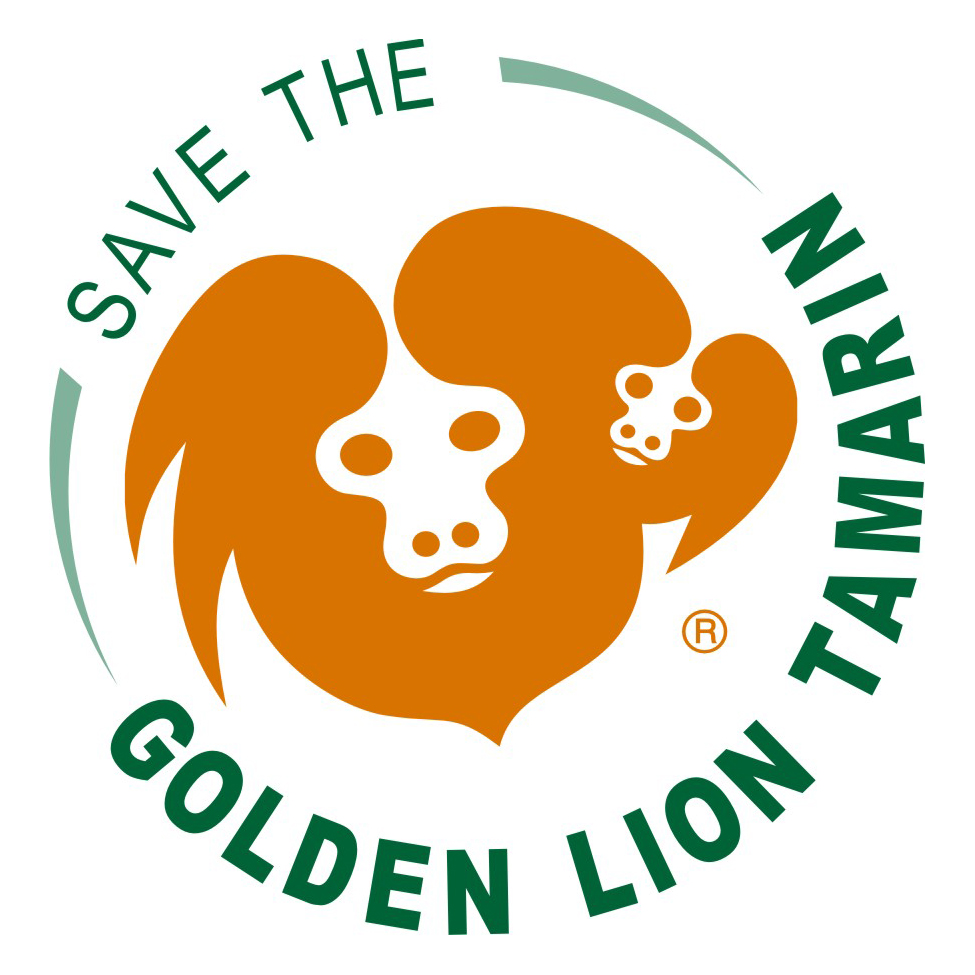Jennifer Mickelberg
December 22, 1975 - October 31, 2023
To share personal memories and tributes or donate in honor of Dr. Jennifer Mickelberg please see below.
Jennifer Mickelberg is a hero in the 75-year struggle to save the golden lion tamarin, a small, endangered, brilliantly-colored monkey native to the state of Rio de Janeiro in Brazil, and a favorite of zoo-goers worldwide. Jennifer could galvanize a scientific conference with a presentation on golden lion tamarin genetics and population biology, and then cheerfully sell golden lion tamarin t-shirts to conferees to raise money for their conservation.
Jennifer received her BSc in Biology from the University of Minnesota in 1999 and her PhD from George Mason University in 2011. She became the Assistant Studbook Keeper for golden lion tamarins at the Smithsonian National Zoo in 2000, and served as a population biologist at the Smithsonian Conservation Biology Institute until her appointment as Curator of Primates at Zoo Atlanta in 2012. She became Zoo Atlanta’s Senior Director of Collections and Conservation in 2016, and eventually rose to the role of Vice President of Collections and Conservation.
Jennifer had a clear vision for her work as a zoo curator and wildlife biologist. In her own words (from her PhD thesis, titled “ Understanding and managing isolation in a fragmented population of Golden Lion Tamarins, Leontopithecus rosalia”),
“fragmentation is one of the most pervasive threats affecting wildlife populations around the world. The resulting fragments are often small and isolated, increasing a population’s risk of extinction. Demographic variation, such as fluctuation in birth or death rates, can cause a small population’s numbers to plunge so low that recovery is impossible. Due to lack of gene flow, small, isolated populations eventually lose genetic diversity, become inbred, and suffer from inbreeding depression. These threats, however, can be reduced if there is some movement of animals, and gene flow, between populations. Unfortunately, movement of individuals between populations is restricted due to often unsuitable or even hostile environments separating the populations. Improving connectivity in these cases is vital for long term population persistence and viability. Therefore it is critical for conservation planning to include strategies that promote gene flow and metapopulation management strategies.”
It’s easy to see not only the clarity of her premise but also its applicability to the in situ (wild) and ex situ (zoos and research colonies) management of golden lion tamarins and other primates. Jennifer Mickelberg’s too-short scientific life was based on avoiding the extinction of animals and plants, and she taught us much about how to do it.
The habitat of wild golden lion tamarins is fragmented by highways, pipelines, towns, ranches, and farms. Mickelberg, as a member of and long-term advisor to Associação Mico-Leão-Dourado (AMLD, Brazil’s Golden Lion Tamarin Association), guided the Association’s efforts to connect the separated fragments of wild habitat and facilitate animal movements and gene flow among them. She advised AMLD’s biologists about the best genetic pairings of the zoo-born golden lion tamarins that were reintroduced to the wild between 1984 and 2005. Habitat connectivity and gene flow is now one of AMLD’s strategic goals for the conservation of wild golden lion tamarins. Jennifer’s work was so influential that she was elected to serve as a member of the International Committee for Conservation and Management of the Lion Tamarins, which officially advised the Brazilian government on the conservation of all four lion tamarin species.
The “habitats” of the current 500 golden lion tamarins living in zoos are separated among 150 zoos on five continents. As Assistant Keeper and then Manager of the International Golden Lion Tamarin Studbook, Jennifer tracked the lives and pedigrees of thousands of zoo and wild tamarins, and used her expertise to recommend pairings and breeding recommendations for more than two decades. Again, her scientific analyses supported her typically laser-focused goal of retaining 90% of the genetic diversity of the original wild-source founding zoo population over at least the next 100 years. The Brazilian government recognizes the entire zoo population of golden lion tamarins as the property of Brazil, and as an insurance population capable of providing golden lion tamarins for reintroduction to the wild if necessary. Jennifer’s impact on the zoo world earned her the distinction of serving simultaneously (for the first and probably the last time) as the International and North American Golden Lion Tamarin Studbook Keeper, the Coordinator and Population Biologist for the Golden Lion Tamarin Species Survival Plan, and Vice-Chair of the North American Callitrichid Taxon Advisory Group.
She shared her knowledge freely, serving as an instructor in many husbandry and population biology courses and workshops around the world, including a number organized by the International Union for the Conservation of Nature’s Conservation Planning Specialist Group. She was also an instructor for Miami University’s Project Dragonfly, conducted annually in Brazil for students with interest in wildlife conservation and management, and in environmental education careers.
Jennifer managed the free-ranging golden lion tamarin groups at the Smithsonian National Zoo for many years. This pioneering exhibit, which mirrored the efforts to reintroduce zoo-born golden lion tamarins in Brazil, educated and entertained thousands of zoo visitors, and involved the efforts of hundreds of dedicated volunteer guides, whom she trained and coordinated.
Jennifer has served as a member of the Board of Directors of Save the Golden Lion Tamarin, a U.S. Public Charity dedicated to supporting AMLD’s conservation work, since 2010. She was a skillful fundraiser, and in 2020 received a large grant from the Conservation Grants Fund of the American Association of Zoos and Aquariums for a grant titled “Emergency Action to Reduce the Impact of Yellow Fever on Golden Lion Tamarins in Brazil’s Atlantic Forest.”
Dr. Andrew Baker, former Chief Operating Officer of the Philadelphia Zoo, author of many scientific articles on the behavioral ecology of wild golden lion tamarins, and current member of the Board of Directors of Save the Golden Lion Tamarin, recently mused, with despair, “I just can’t see how AMLD and the zoos keeping golden lion tamarins will easily find Jennifer’s successor.”
To honor Jennifer’s legacy – a Forest Corridor
Jennifer Mickelberg worked tirelessly to connect populations of golden lion tamarins and to build networks of knowledgeable and dedicated biologists to save animals in the wild and in zoos. To honor Jennifer’s legacy of “connectedness,” AMLD is planting its most important forest corridor to date—the one that will finally achieve Jennifer’s goal of 2,000 golden lion tamarins living in connected forest. “Jennifer’s Forest Corridor” will be a strip of restored native Atlantic Forest that allows descendants of zoo-born golden lion tamarins in one isolated forest fragment to cross cattle pasture to reach a population of native golden lion tamarins. In a few years, when the forest is tall enough for the tamarins to use, Jennifer’s corridor will result in over 3,000 golden lion tamarins living and freely reproducing in one big forest, fulfilling her dream of a viable population.
Thanks to the generous contributions of donors from around the world, AMLD now has sufficient funds to complete planting 35,000 trees by May 2025 on the entire 21-hectare area (51 acres) of Jennifer’s corridor. AMLD will care for the trees until they can survive on their own (about 3 years). When the trees are tall enough (5-7 years) for golden lion tamarins to cross, Jennifer’s corridor will assure a healthy long-term future for over 3,000 GLTs.
To contribute to growing more corridors in GLT habitat like Jennifer’s Forest Corridor, donate via Paypal or click the donate button below. To learn more see our Grows Trees campaign.
Share Your Memories of Jennifer
Personal memories, tributes, and messages of support for Jennifer’s family and her GLT family around the world can be shared here. A free account sign up may be required to post your memory.



